Newar Culture: The Living Heritage of Kathmandu Valley
Newar culture is one of the oldest cultures in Nepal. The Newars are the indigenous(janajati) people of the Kathmandu Valley. They have developed a rich civilization that blends Hinduism and Buddhism. They express themselves through unique festivals, language, music, dance, architecture, cuisine, and social customs. They have own referred to as the custodians of Nepal’s classical heritage. The Newars have preserved traditions that date back over a thousand years.
Their culture is not just a memory of the past. it is a living heritage, thriving in cities like Kathmandu, Patan (Lalitpur), and Bhaktapur. There a ancient temples, palaces, and rituals that still dominate daily life.
1. Origins and History of Newar Culture
The Newars are considered the original inhabitants of the Kathmandu Valley. Their culture started during the Licchavi period (4th–9th century AD). And they reached its peak during the Malla period (12th–18th century AD). When the valley was divided into three independent kingdoms: Kathmandu, Bhaktapur, and Patan.
During this time, Newar kings built magnificent palaces, temples, and courtyards. It still defines the architecture of the valley today. They also established a rich tradition of art, trade, literature, and music. They influenced by both Hindu and Buddhist philosophies.
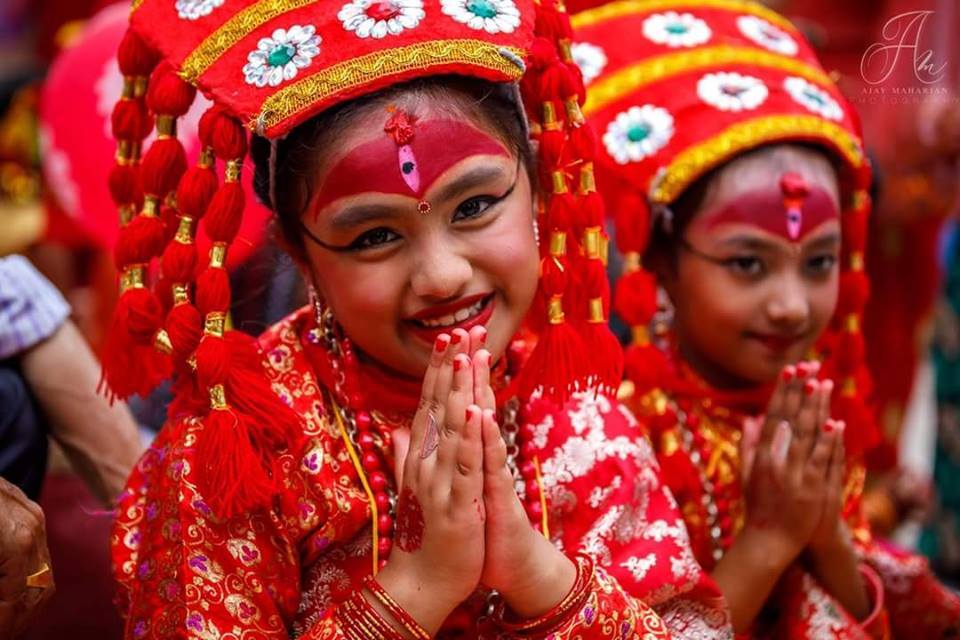
2. Religion and Philosophy Of Newar Culture
Newar culture uniquely blends Hinduism and Buddhism.They are making it religiously diverse and inclusive.
- Hindu Newars worship deities such as Taleju Bhawani, Kumari, Ganesh, and Bhairav. Hindu rituals, caste systems, and priestly traditions are followed.
- Buddhist Newars, mostly of the Vajrayana school, worship Dipankara Buddha, Avalokiteshvara, and practice Tantric rituals under the guidance of Buddhist priests (Vajracharyas).
.
3. Language and Literature: Newar culture
Newars speak their own language called Nepal Bhasa (Newar language). It is of Tibeto-Burman origin. It was once the administrative and cultural language of the Kathmandu Valley.
Nepal Bhasa has a rich literary tradition, including:
- Classical poetry and plays
- Folk tales and myths
- Religious texts
- Modern novels and essays
4. Festivals and Jatras Of Newar Culture
Newar culture is famously festive. Every month of the lunar calendar features a festival or Jatra (procession). Many of which are centuries old. These events involve music, masked dances, rituals, and community feasts.
Major Newar festivals include:
- Indra Jatra: Held in Kathmandu. It honors Indra, the god of rain. It features the chariot procession of Kumari. It’s called the living goddess.
- Bisket Jatra: Celebrated in Bhaktapur during the Nepali New Year. It was with massive chariot-pulling and tongue-piercing rituals.
- Machhindranath Jatra: A long and elaborate chariot festival celebrated in Patan. It is dedicated to the rain god Rato Machhindranath.
- Gai Jatra: A humorous festival to remember the dead. It’s where families parade dressed in funny costumes.
- Gunla: A sacred Buddhist month where devotees visit temples early in the morning. It is accompanied by Gunla Bajan music.

5. Art, Architecture, and Sculpture Of Newar Culture
Newar architecture and craftsmanship are world-renowned. Newars are the master builders of Nepal’s pagoda. It is style temples, stone water spouts (hiti), stupas, chaityas, and wood-carved palaces.
- Patan Durbar Square, Bhaktapur Durbar Square, and Kathmandu Durbar Square are all creations of Newar artistry.
- The Kumari Ghar (house of the Living Goddess) and temples of Nyatapola, Kasthamandap, and Swayambhunath showcase their design brilliance.
Newars are also skilled in:
- Paubha painting (similar to Tibetan Thangka)
- Metal casting of statues using the lost-wax method
- Intricate wood and stone carvings
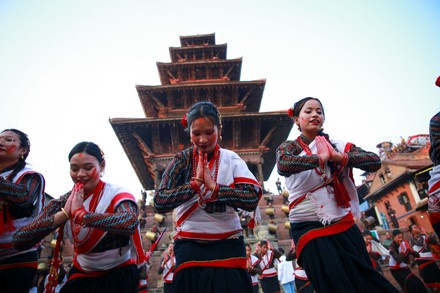
6. Music and Dance
Music is essential in Newar rituals and festivals. Traditional Newar music includes:
- Nasa dya music for processions
- Gunla Bajan played during the sacred month of Gunla
- Dhime drums, Bhushya (cymbals), and wind instruments like Bansuri
Newar dances are either ritual or celebratory:
- Lakhey Dance: A masked dance believed to ward off evil spirits.
- Devi Nach: Performed by women to honor goddesses.
- Jyapu Dance: Folk dances performed during harvest or communal gatherings.
Each dance has religious or mythological meaning.

7. Cuisine and Feasts
Newar cuisine is diverse, flavorful, and deeply symbolic. It includes a variety of:
- Meats (buffalo, chicken, goat)
- Beaten rice (Chiura)
- Pickles (Achar)
- Fried bread (Wo, Bara)
- Stews (Aloo Tama, Kwati)
- Newar-style momo (Yomari) and Chatamari (rice pancake)
Samay Baji, a ceremonial dish served during rituals. This includes several symbolic items representing health, prosperity, and balance.
Feasting is central to Newar social life. Jankhu (birthday feasts), Guthi feasts, and marriage or funeral banquets are all opportunities for the community to gather.

8. Social Structure and Guthi System
Newar society traditionally follows a caste system with divisions like Shrestha, Jyapu, Kansakar, Tamang, Tuladhar, etc. Each caste has its own customs, roles, and rituals.
A unique institution in Newar culture is the Guthi system. This is a kind of socio-religious association or trust. Guthi members maintain temples, organize festivals, and manage funerals. This community-based system ensures that rituals and traditions continue across generations.
9. Life Cycle Rituals and the Living Goddess
Newars observe elaborate cultures, including:
- Jatakarma (birth ceremony)
- Ihi (Bel bibaha for girls)
- Bara (goddess seclusion for girls)
- Marriage ceremonies with unique customs
- Final rites (Cremation and Shraddha)
The Newar tradition of the Kumari. This is called the Living Goddess. It is especially famous. A young girl is selected and worshipped as a human incarnation of the goddess Taleju until puberty.
This blending of myth and ritual makes Newar culture unique in the world.
10. Challenges and Preservation
Modernization, urbanization, and migration pose challenges to the preservation of Newar culture. Ancient sites are under threat, traditional crafts are declining, and younger generations are drifting from customs.
The cultural organizations, local communities, and UNESCO have been working to protect Newar heritage. Festivals are still widely celebrated. Their efforts are being made to teach Nepal Bhasa, revive Guthi culture. They promote Newar tourism.
See More Related:
Indigenous Communities (Janajati) of Nepal
Bidhya Chapagain is the most popular journalist in Nepal
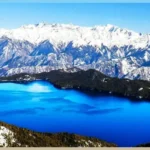






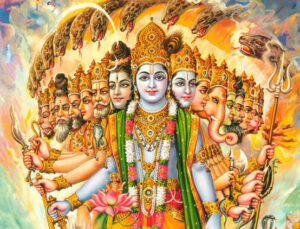
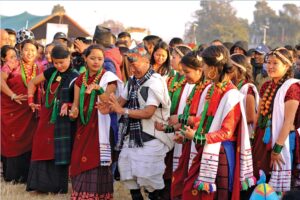
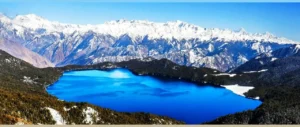



2 thoughts on “The Newar Culture”